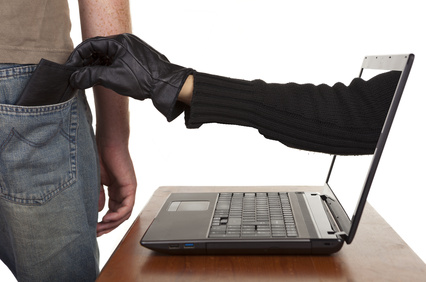8 Tips to shopping safe online
Quick tips every shopper should know

Let's face it, we LOVE shopping online. Amazing bargains, Crazy convenience, Mind-blowing selection, Lightening fast shipping. And we have all convinced ourselves that shopping online is secure. Then retailers like Target and Home Depot get hacked and our credit information is stolen, forcing us to be a little more hesitant of hitting that "purchase" button. While somewhat alarming, these events don't have to prevent you from shopping online. All you need is to exercise some common sense and practical advice.
Here are 8 tips for staying safe online, so you can grab that pair of shoes you just have to have.
1. Shop trusted websites
Checking to make sure the website is shopping on is a trusted site is the first step to protecting your identity. Plus, if you know the site, chances are you're less likely to get ripped off. If you are using websites like Amazon.com or ebay.com, make sure to pay attention to where your item is sold or shipped from. There has been a recent trend of items from companies overseas, which can increase the risk.
2. Look for the Lock
Never ever, ever buy anything online using your credit card from a site that doesn't have SSL (secure sockets layer) encryption installed-at the very least. You'll know if the site has SSL because the URL for the site will start with HTTPS:// (instead of just HTTP://). An icon of a locked padlock will appear, typically in the status bar at the bottom of your web browser, or right next to the URL in the address bar. It depends on your browser.
Never, ever give anyone your credit card over email. Ever.

3. Don't Tell All
No online shopping store needs your social security number or your birthday to do business. If the website you are attempting to shop at is asking for this information to complete your order, reconsider shopping there. If this information gets in the wrong hands, combined with your credit card number for purchases, they can do a lot of damage. The more they know, the easier it is to steal your identity. When possible, default to giving up the least amount of information.
4. Check Statements
Be sure to keep track of when your purchases show up on your credit card statement. Make sure you don't see any fraudulent charges, even originating from sites like PayPal. You can use sites like Mint.com so all of your credit card transactions can be viewed all in one place. If you do see something wrong, pick up the phone to address the matter quickly. In the case of credit cards, pay the bill only once you know all your charges are accurate. You have 30 days to notify the bank or card issuer of problems, however; after that, you might be liable for the charges anyway.
(Continued On Next Page)
Show more